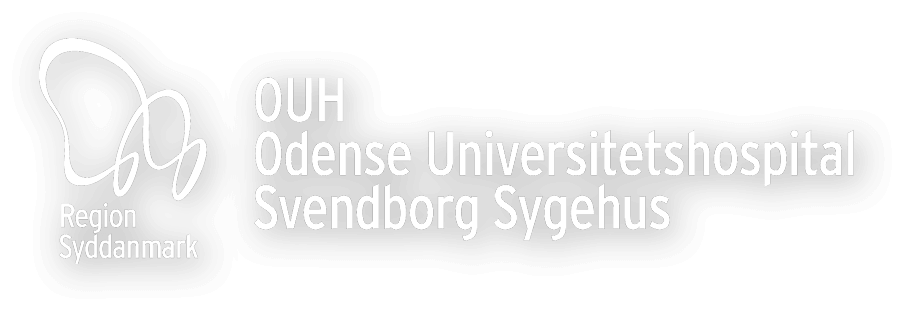WP 5
CE for diagnostics, follow-up and surveillance
Primary Investigator: Prof. Niels Qvist
WP5 in a nutshell
WP5 contains the research activities related to the use of CE in diagnostics and how CE can be transferred to this clinical area. This WP will focus on several areas in diagnostics to test the potential of CE.
Aim
To investigate sensitivity, feasibility, and patient experiences of implementing capsule endoscopy on these indications. Further, to investigate if capsule endoscopy will increase adherence to the programmes and improve diagnostics.
Relevance
Patients who enter a follow-up or surveillance programme of OC´s due to increased risk of disease either due to previous neoplasms, inherited syndromes or chronic disease such as chronic inflammatory disease, often fear the repeated investigations and especially children and young adults drop out due to the discomfort and potential complications from colonoscopy.
Introduction of capsule endoscopy might reduce the discomfort and increase adherence to the programme. On this background, the capsule endoscopy may be attractive for the patients and reduce health care costs due to a reduction in diagnostic investigations, hospital admission with general anaesthesia, and result in a more timely treatment with a reduced risk of complications to the disease.
Design
Abdominal pain in children and young adults – Approximately 40 patients with the given problematic condition are investigated with endoscopy in general anaesthesia each year at the department at OUH.
The feasibility of capsule endoscopy in this group of patients has never been investigated systematically [1]. It may face some problems in the swallowing of the capsule and patient compliance to the bowel preparation procedures, which will be the aims of the project. A doubling in the incidence of inflammatory bowel disease (IBD) has occurred in Denmark during recent decade [2, 3].
Timeline
With an inclusion period of two years, more than 50 patients are anticipated to be included in the study, which will give us sufficient answer on the utility of CE as the primary diagnostic procedure in this patient group.
References
1. Buijs, M.M., et al., Intra and inter-observer agreement on polyp detection in colon capsule endoscopy evaluations. United European Gastroenterol J, 2018. 6(10): p. 1563-1568.
2. Buijs, M.M., et al., Reproducibility and accuracy of visual estimation of polyp size in large colorectal polyps. Acta Oncol, 2019. 58(sup1): p. S37-s41.
WP 5.1 substudy
Polyposis syndromes
Primary Investigator: Prof. Gunnar Baatrup
Relevance
The diagnosis and surveillance of these relative rare conditions rely primarily upon upper and lower endoscopy and a traditional small intestinal capsule endoscopy. The CE might be an alternative as the primary investigation with improved patients’ satisfaction and more cost-effective. The entity includes several subgroups with the Peutz-Jegher´s syndrome as the classical disease.
Aim
To investigate CE as an alternative as the primary investigation and to improve patient satisfaction and acceptability.
Design
We have done extensive studies in these patient groups regarding genetics, diagnosis, and follow-up [4, 5]. The existing guidelines for diagnosis, investigation of relatives and follow-up of index patients is with low evidence. Capsule endoscopy will add further knowledge on the optimal investigation and follow-up in this patient group. Our department is one of three departments in DK taking care of these patients and the other departments have consented to join this project.
Timeline
With an inclusion period of two years, approximately 100 patients may be included, which is sufficient to give significant information on feasibility, utility and health care consequences by introducing the colon capsule endoscopy at the primary tool for follow-up in these patients.
WP 5.2 substudy
Crohn´s disease – postoperative follow-up
Primary Investigator: Prof. Gunnar Baatrup
Relevance
Continuous medical therapy or not in patients after intestinal resection for Crohn´s disease is a core and unanswered clinical problem. There is a general agreement that the presence or absence of mucosal lesions should be decisive, but the evidence is low [9].
Aim
To investigate the potential of using CE in postoperative follow up for patients with Crohn’s disease.
Design
With this project, all patients undergoing intestinal resection will be offered at capsule endoscopy 6 months after surgery and only patients with significant lesions will be offered biological treatment. Another CE will be performed 9 month later in all patients with the aims to evaluate therapeutic response in those with mucosal lesions and to estimate the long-term risk of recurrence for those with an initial normal luminal condition. The inclusion of 90 patients in the study will be able to give an answer on this important clinical problem, which will have great implications for postoperative medical treatment.
Timeline
The inclusion period will be approximately 2.5 years with the present operative activity.
- Arguelles-Arias, F., et al., Guideline for wireless capsule endoscopy in children and adolescents: A consensus document by the SEGHNP (Spanish Society for Pediatric Gastroenterology, Hepatology, and Nutrition) and the SEPD (Spanish Society for Digestive Diseases). Rev Esp Enferm Dig, 2015. 107(12): p. 714-31.
- Norgard, B.M., et al., The incidence of ulcerative colitis (1995-2011) and Crohn’s disease (1995-2012) – based on nationwide Danish registry data. J Crohns Colitis, 2014. 8(10): p. 1274-80.
- Fiorino, G. and S. Danese, Diagnostic Delay in Crohn’s Disease: Time for Red Flags. Dig Dis Sci, 2016. 61(11): p. 3097-3098.
- Jelsig, A.M., et al., Disease pattern in Danish patients with Peutz-Jeghers syndrome. Int J Colorectal Dis, 2016. 31(5): p. 997-1004.
- Jelsig, A.M., et al., Juvenile Polyps in Denmark From 1995 to 2014. Dis Colon Rectum, 2016. 59(8): p. 751-7.

